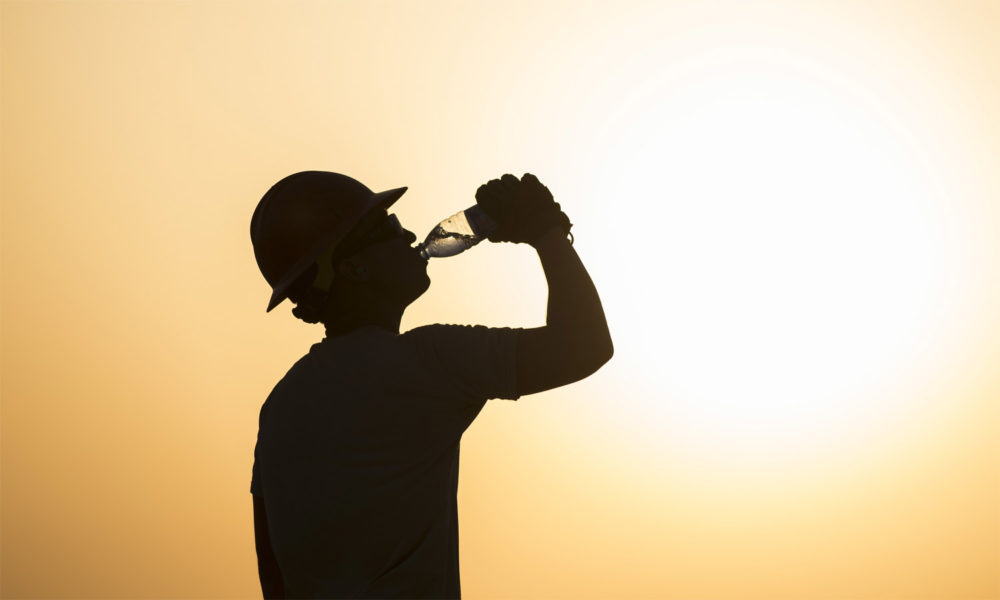On Monday, President Biden announced a new cross-agency initiative to address extreme heat – the nation’s leading weather-related killer and one that is taking an enormous toll on the health, lives, and livelihoods of our nation’s workers and communities.
It is heartening to see worker health and safety in the forefront of this critical effort, especially for the 32 million people in the US who work outdoors – farm workers, fishers, construction workers, first responders, installation, repair and maintenance workers, transportation workers, landscapers, and others. And even more so for Black and Brown workers who are disproportionately impacted by this potentially deadly and largely preventable hazard.
UCS has been analyzing and documenting the causes, impacts, and solutions related to extreme heat for years (see for example here, here, and here). Our recent report, Too Hot to Work – and its interactive mapping tool, video, and podcast – provide a laser focus on outdoor workers.
The White House has tasked the Occupational Safety and Health Administration (OSHA) with launching a multi-pronged initiative to protect workers exposed to extreme heat – with both regulatory and non-regulatory components. OSHA quickly announced its plan to enhance and expand protections for outdoor and indoor workers exposed to extreme heat. The plan includes:
- Launching a process to develop a workplace heat standard
- An enforcement initiative on heat-related hazards, prioritizing inspections of heat-related complaints
- The development of a national emphasis program targeting heat inspections of high-risk industries
- Conducting interventions when OSHA inspectors observe employees performing strenuous work in hot conditions
That’s great news – but there’s a rub
This is welcome and long overdue news, as only four states – California, Washington, Oregon, and Minnesota (which covers indoor workers only) – provide mandatory heat protection for workers, and those to quite varying degrees. OSHA’s chronic underfunding and understaffing has meant that few workplaces are routinely inspected and the majority of US workers remain unprotected with their heat-related illnesses largely unreported.
So the agency’s multi-pronged approach is smart; some components can and must be implemented without delay. OSHA already has a powerful tool in its toolbox called the General Duty Clause, which could be more vigorously enforced to protect workers from the safety and health risks of extreme heat. And while many of us applaud and welcome the plan to develop a workplace heat standard, history tells us that the process can and likely will take years. (For example, OSHA started the regulatory process for silica – an ancient and well-recognized occupational hazard – in 1997 and was finally able to issue a final standard in 2016 – almost two decades later!)
Meanwhile industry has already geared up for the fight. The US Chamber of Commerce is punting on employers’ responsibilities to protect their workers by falsely claiming that “defining a heat hazard can be subjective” and that a heat standard would make employers responsible for things they can’t control. Seriously! In Tuesday’s New York Times, the Chamber’s vice president of workplace policy noted there are unique “difficulties when it comes to creating a heat standard.”
Unique difficulties? How about these? Research has shown that farmworkers are 35 times more likely to die from heat than other workers. Heat-related work illnesses and injuries are undercounted. Workers continue to get sick and die from a hazard that’s preventable. Those are the difficulties we should be talking about.
Breaking this historic trend and getting this rule out in a reasonable period of time will require creativity, flexibility, expedited processes, and a spine of steel at OSHA in the face of the coming blowback. It will also require a White House committed to expediency and a willingness to examine, accelerate, and even change its own processes.
And it will also require vigilance, engagement, and pressure from all of us who want to see our nation’s workers get the protections they need from extreme heat so they can return home safe and healthy at the end of workday.

